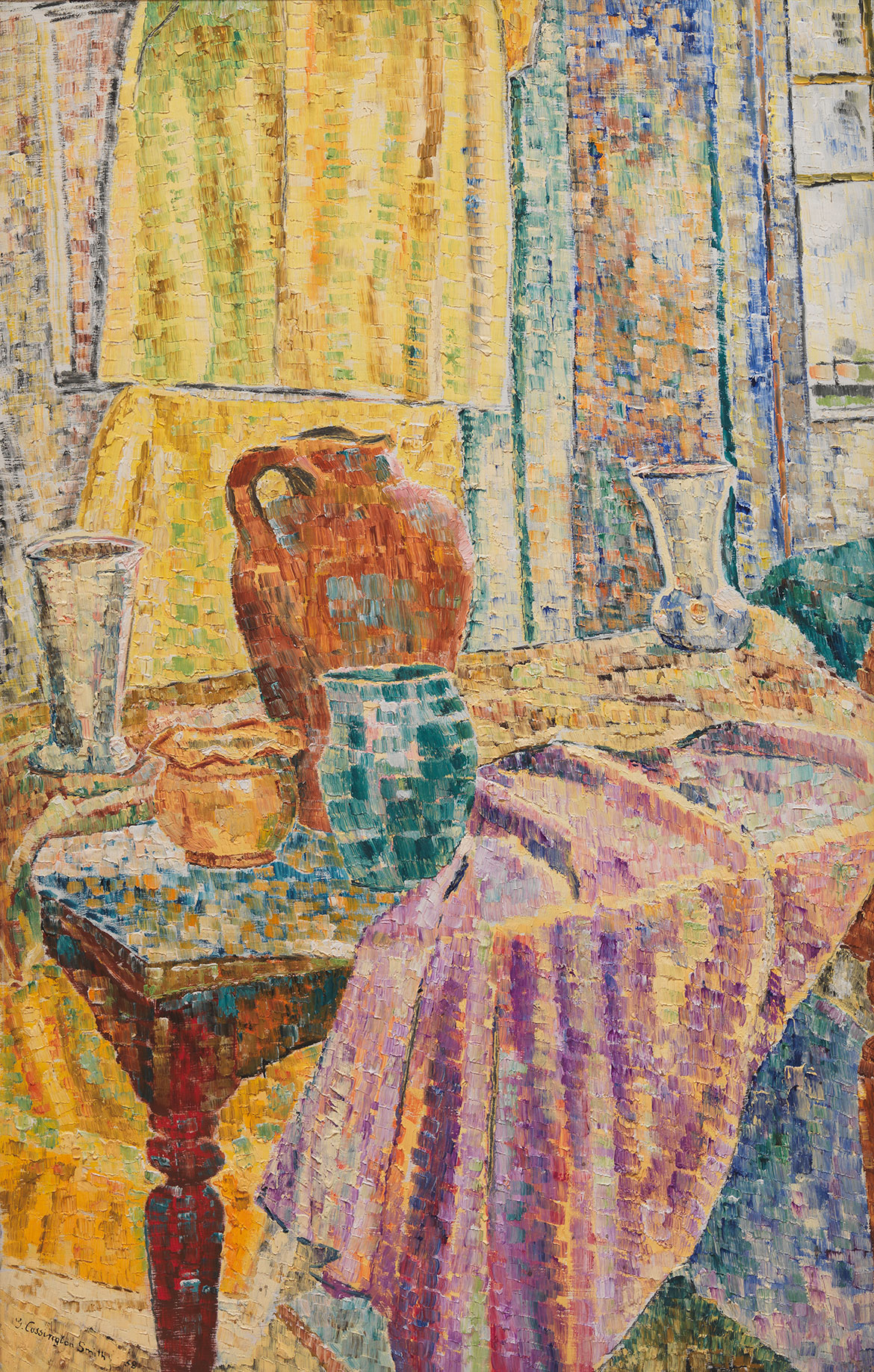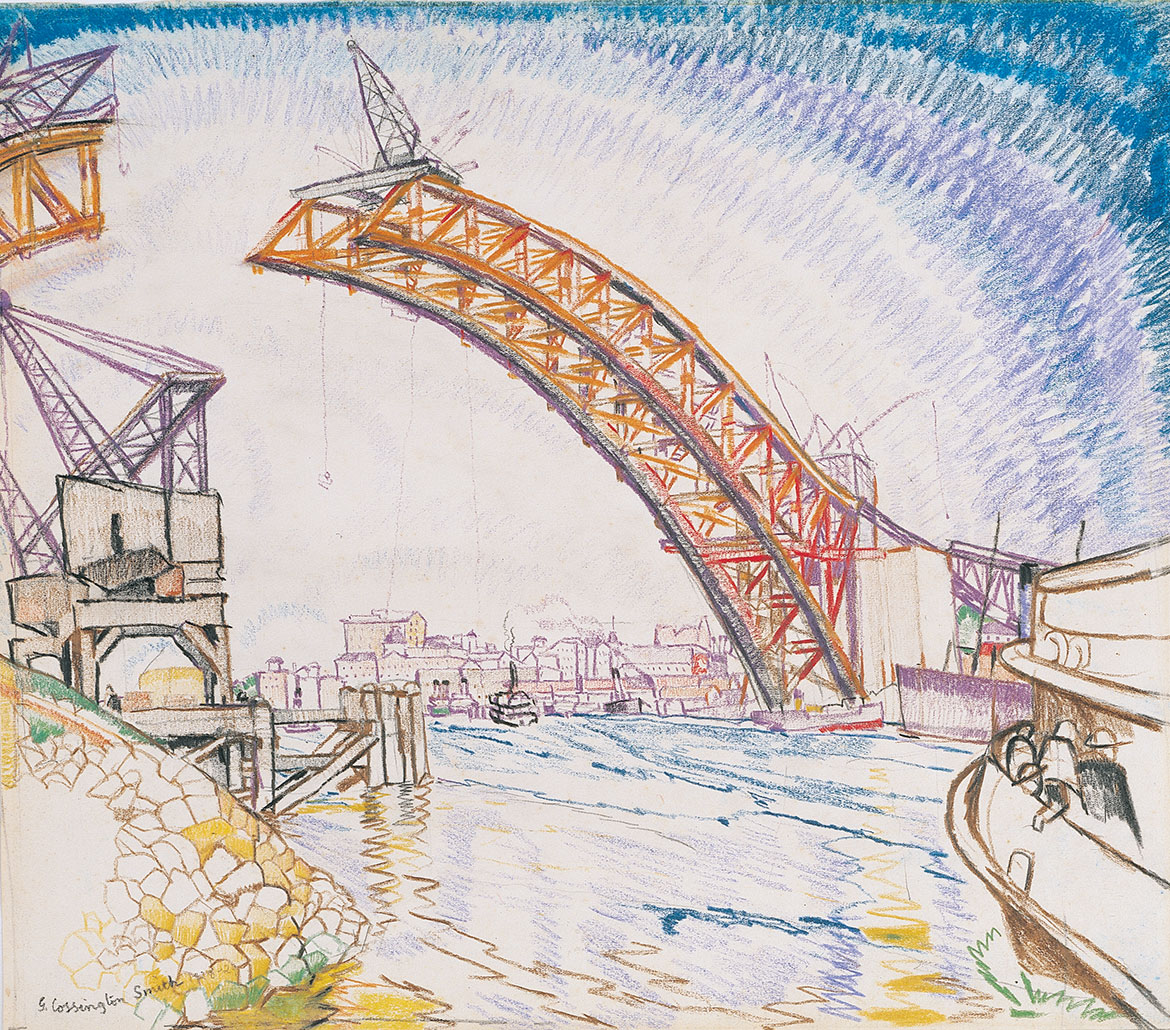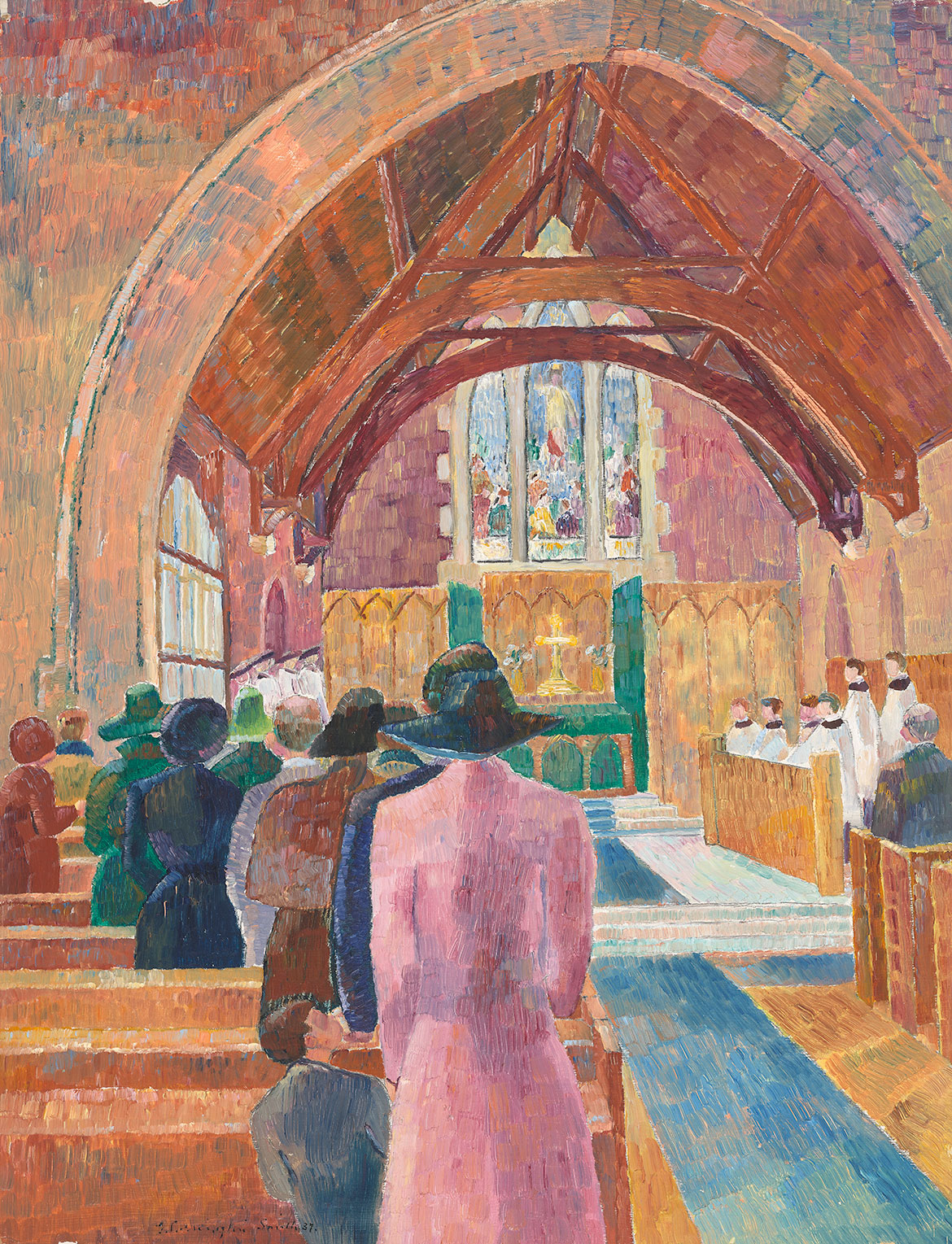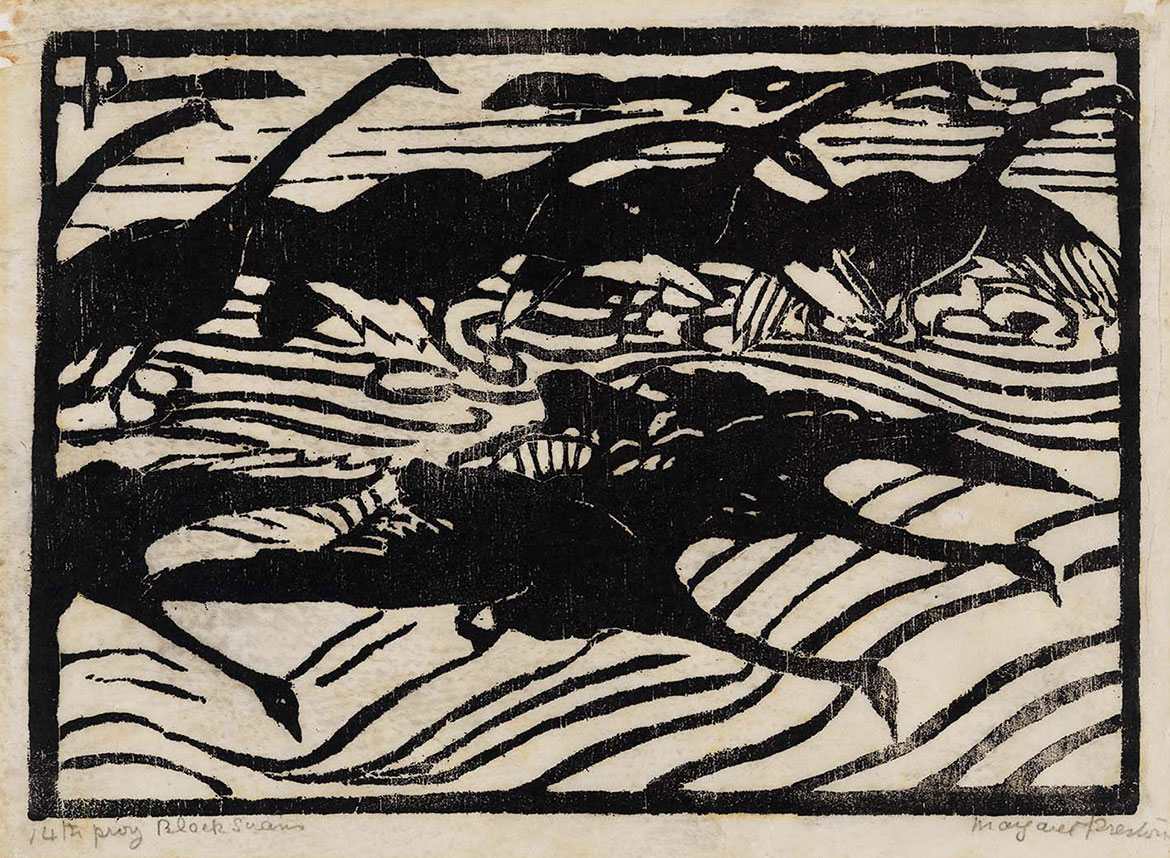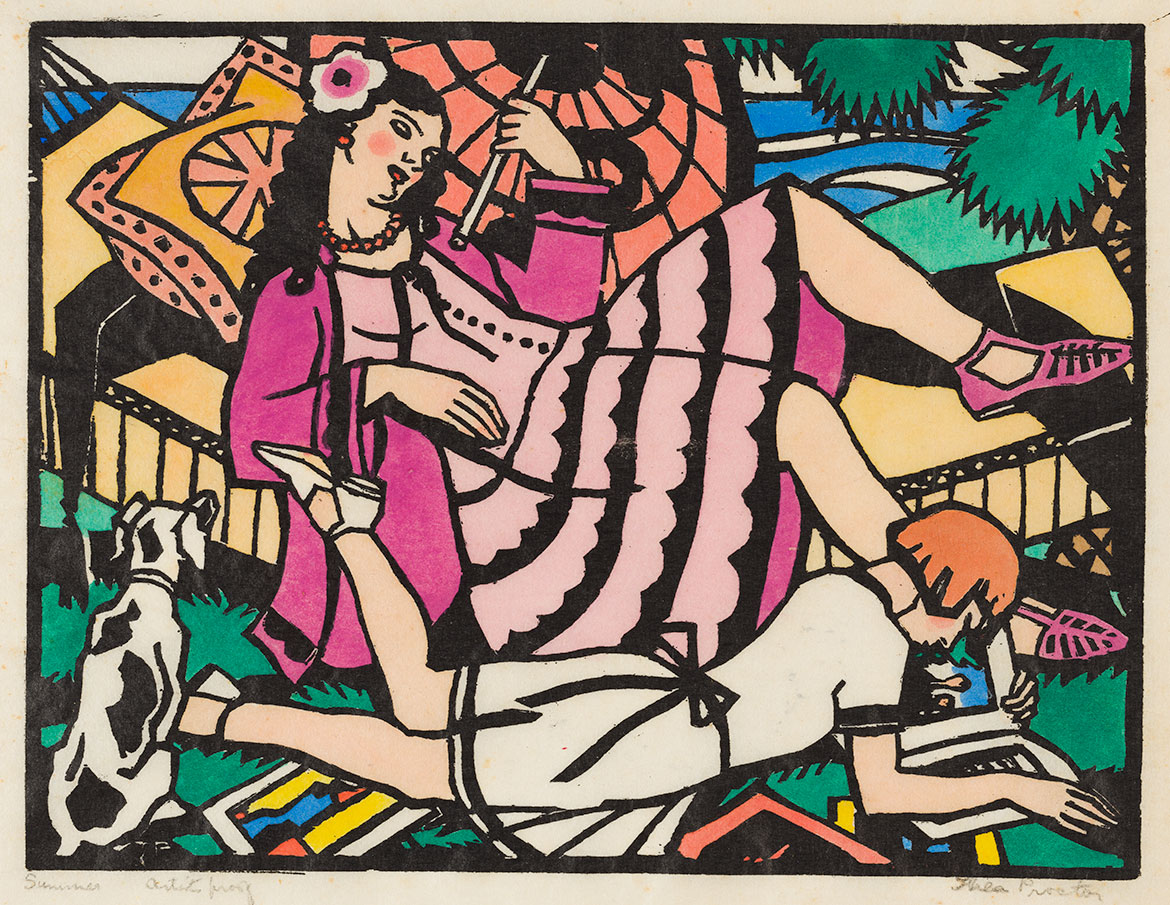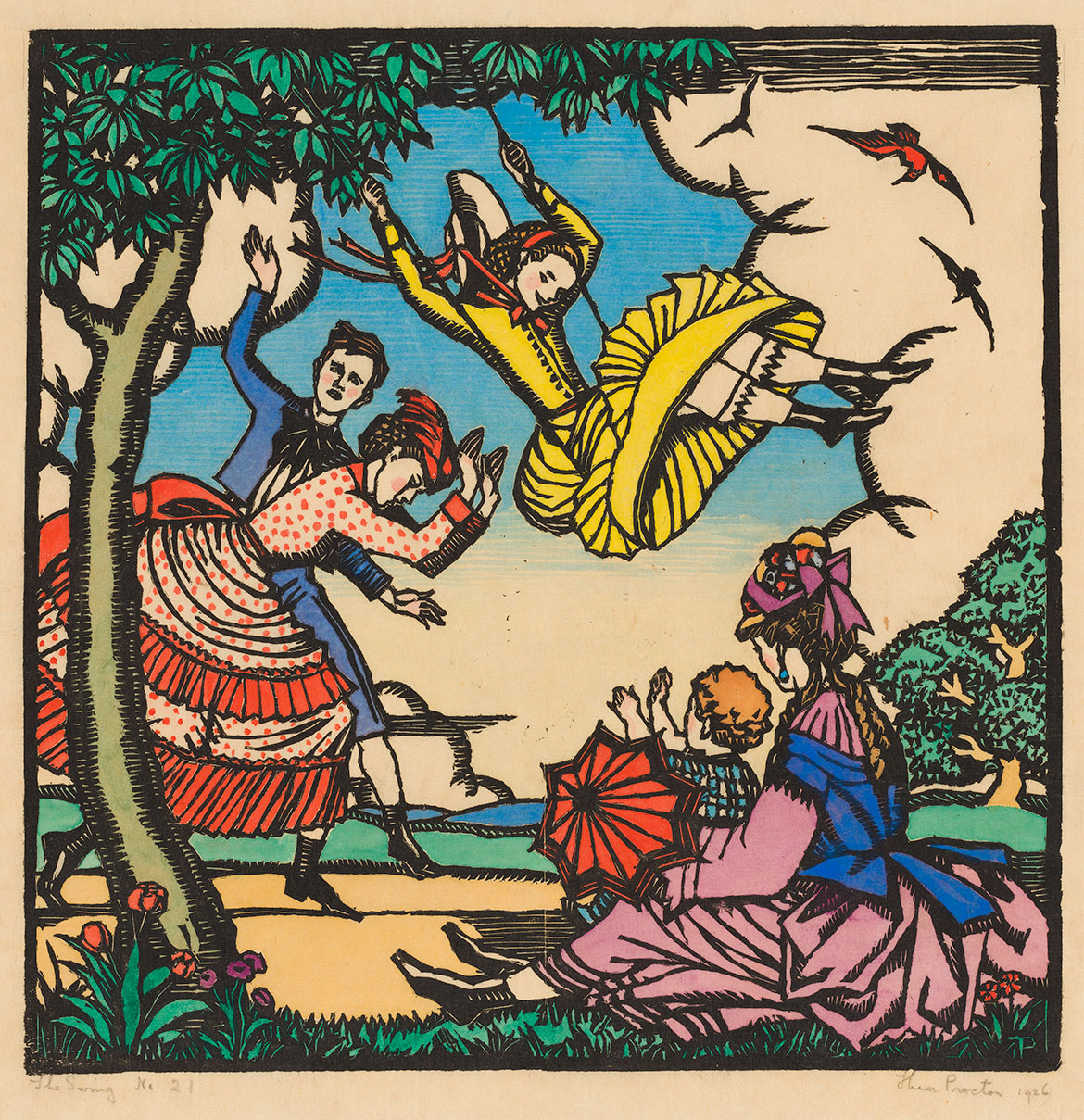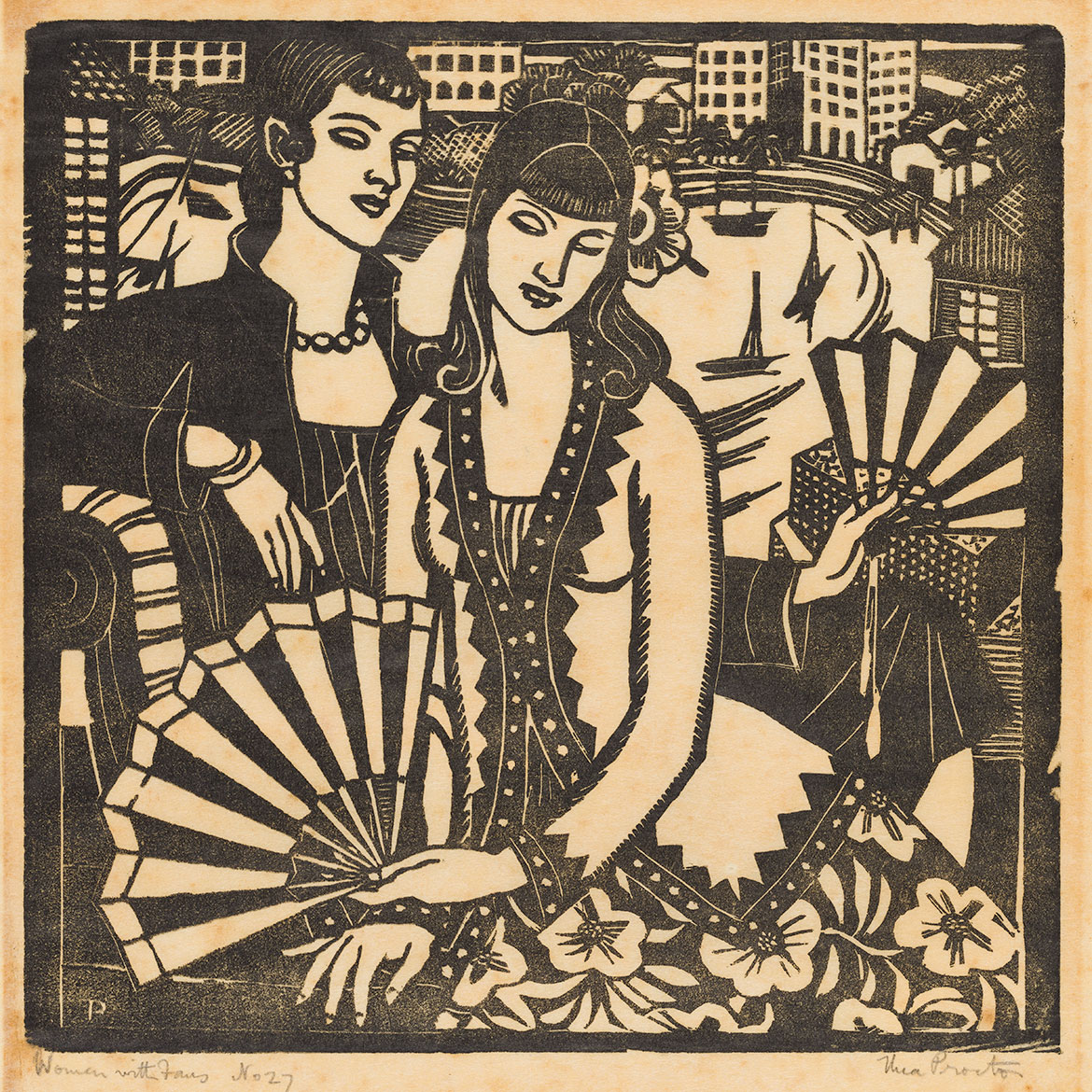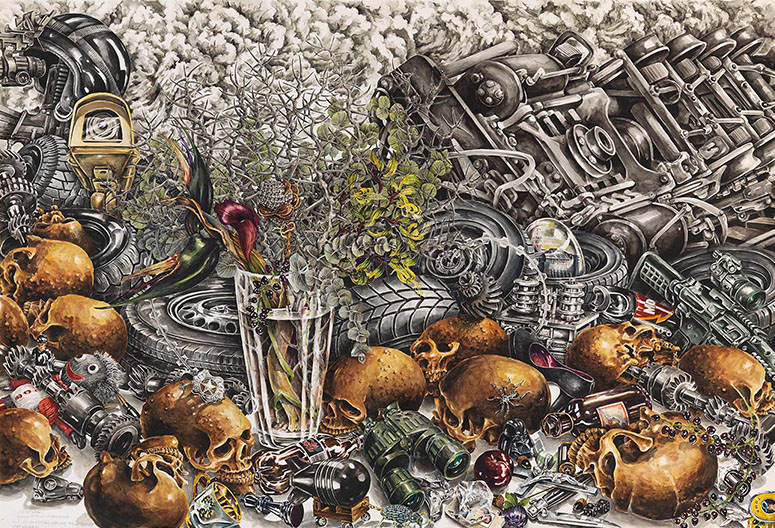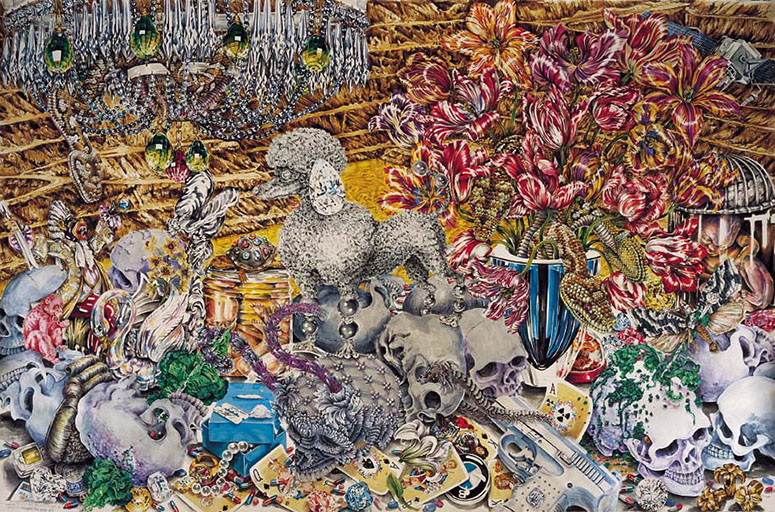‘Full Face: Artists’ Helmets’ was developed in response to ‘The Motorcycle: Design, Art, Desire’ exhibition showcasing 100 motorcycles from the 1870s to the present celebrating 150 years of motorcycle history.
Accepting our invitation to individualise a Biltwell Gringo ECE ‘full face’ helmet, 15 contemporary Australian artists — Monika Behrens, Kate Beynon, David Booth (ghostpatrol), Eric Bridgeman and Alison Wel, eX de Medici, Shaun Gladwell, Madeleine Kelly, Callum McGrath, Archie Moore, Robert Moore, Nell, Reko Rennie, Brian Robinson, TextaQueen, and Guan Wei — have been inspired by the helmets’ sculptural form.
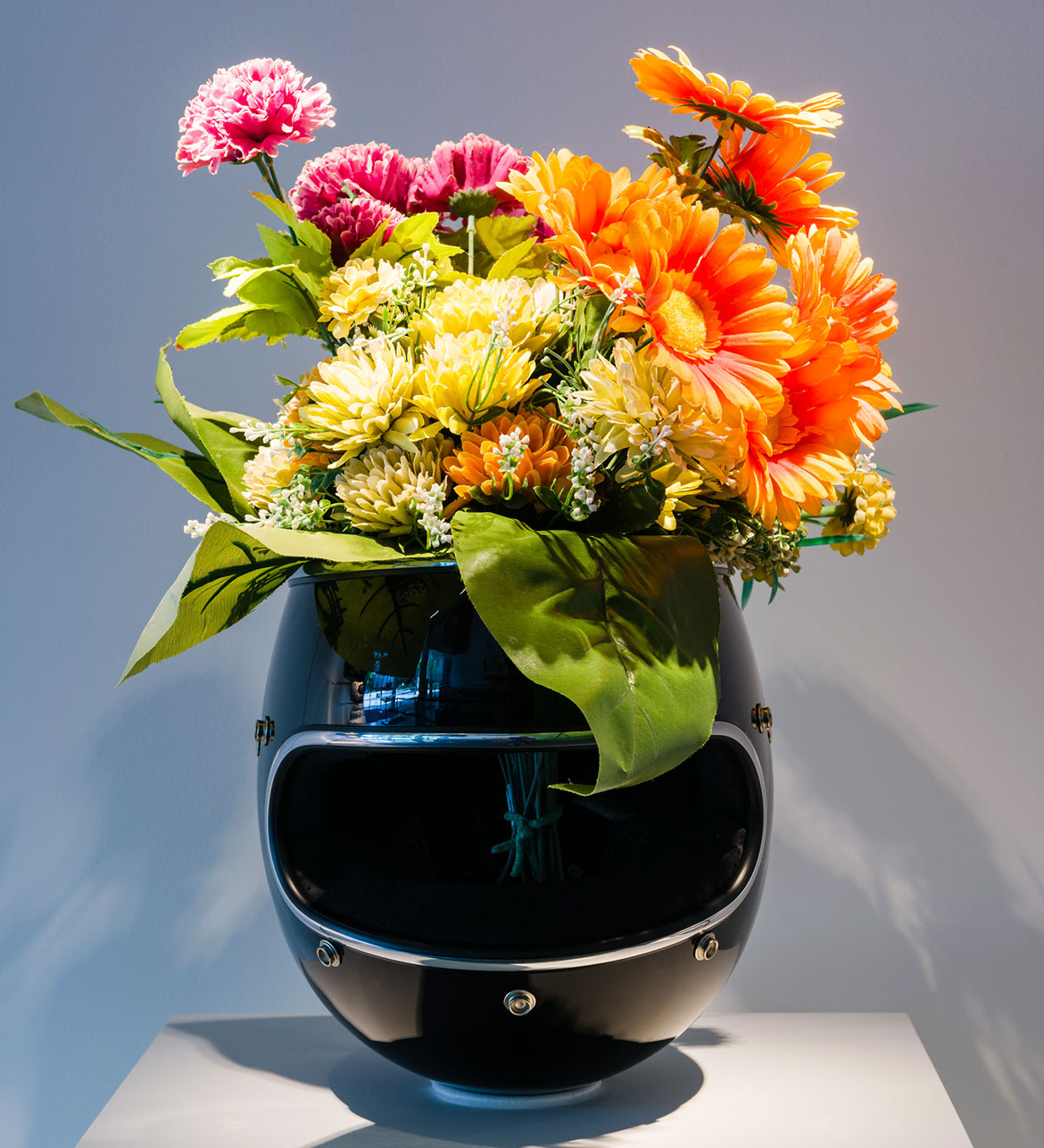

Shaun Gladwell has a longstanding fascination with motorcycles, through both personal interest and an appreciation of the vehicle’s role in popular culture. His video work Approach to Mundi Mundi 2007 — which was filmed on the outskirts of the town featured in Mad Max (1979) — appears in ‘The Motorcycle’. Gladwell’s contribution to ‘Full Face’ is an inverted helmet filled with plastic flowers resembling the garlands that appear at roadside memorials, reminding us that motorcycling has its risks.
Monika Behrens similarly acknowledges the darker side of riding. She has painted 13 hallucinogenic flowers on her helmet, alluding to the number’s associations with underground biker communities and illicit drugs. The plants pose a subtle challenge to this culture, subverting, in her words, ‘the concept of the rough/tough biker by appearing soft and decorative’.
DELVE DEEPER: Browse the FULL LIST OF MOTORCYCLES from humble origins to cutting-edge prototypes
RELATED: READ MORE ABOUT THE BIKES ON DISPLAY
Guan Wei, Ritualistic helmet 2020 / Robert Moore, Kindness 2020 / Madeleine Kelly, Birds of passage 2020 / Monika Behrens, 13 2020 / Courtesy: The artists
Some artists have transposed imagery that they use in their practice to the form of the helmet, exploiting its convex shape. For example, Guan Wei, an artist known for his idiosyncratic approach, has juxtaposed motifs associated with China’s Cultural Revolution against images of rebellion from popular culture.
Torres Strait Islander artist Brian Robinson has likewise employed an array of personally significant symbols, including the Dhari, or headdress, that appears on the Torres Strait Islander flag, and the star constellation of Tagai that signifies the value of astronomy to his seafaring people.
The exhibition reflects a range of other approaches, some of them deeply personal. Archie Moore, whose late uncle Garry was ‘well-known for riding his bikes vast distances between towns west of Toowoomba’ and ‘would custom-make his own bikes from scrap pieces’, has created an homage. Moore’s helmet features a spectacular set of cow horns reminiscent of the ones his uncle once used to individualise his own helmets, worn by the artist as a child.
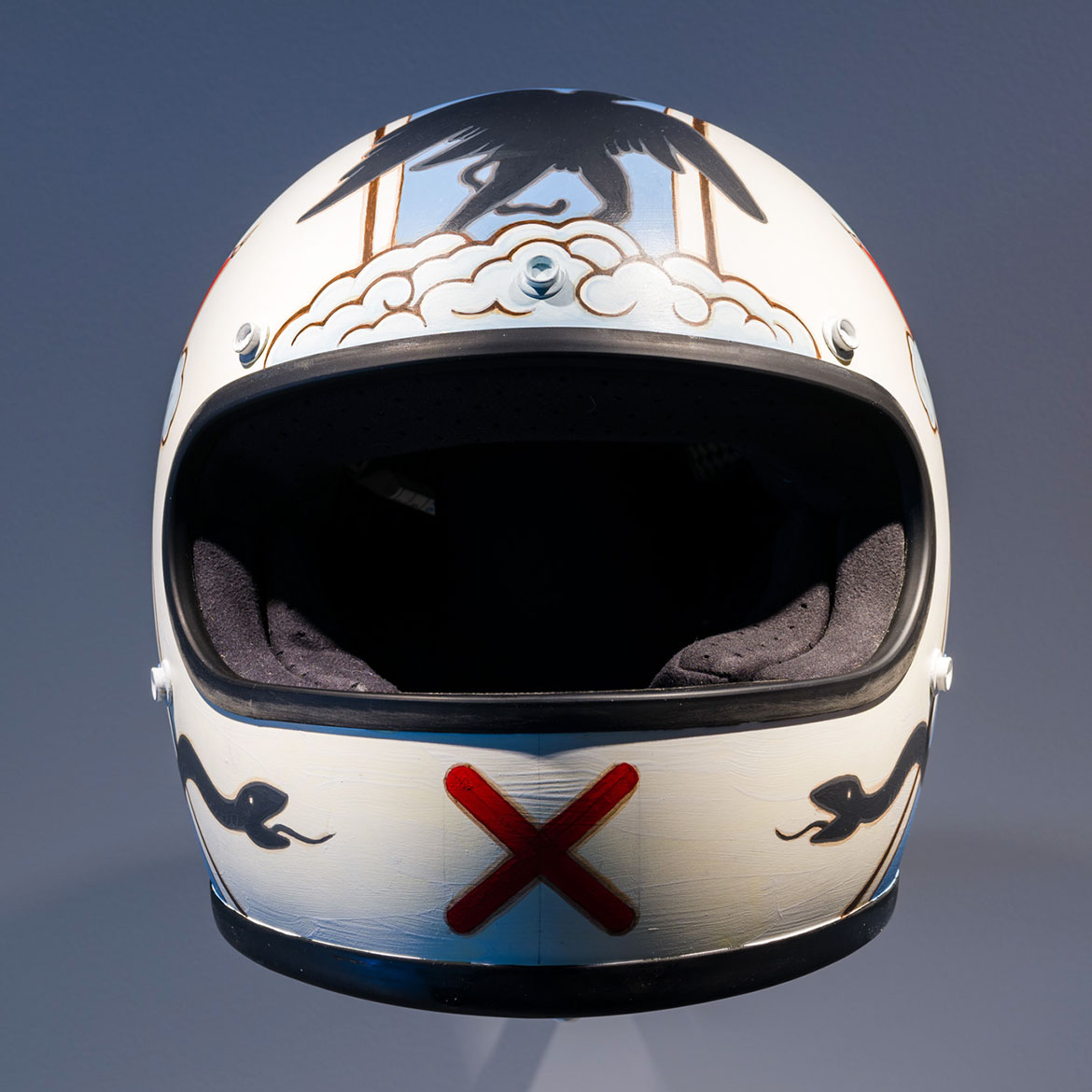
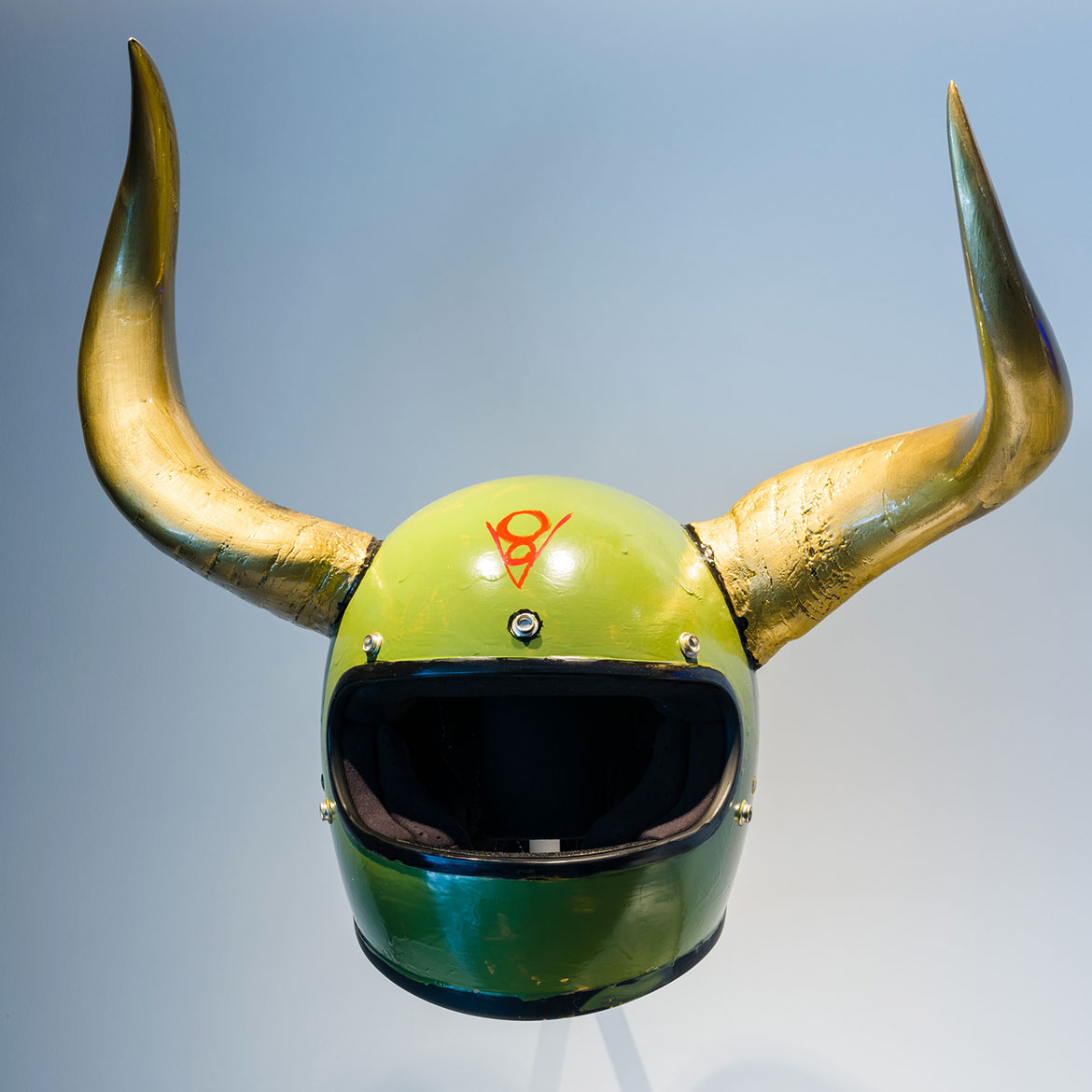
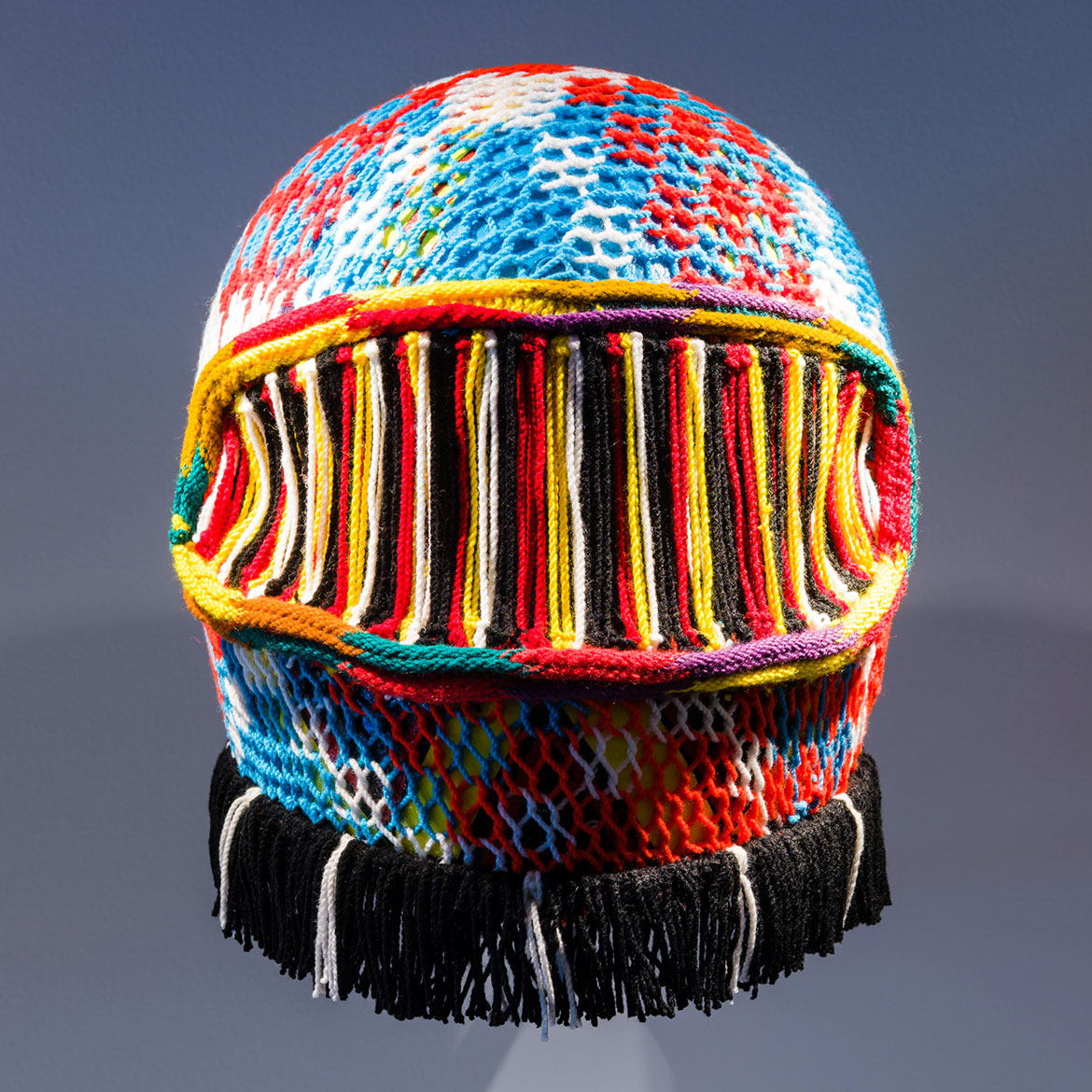
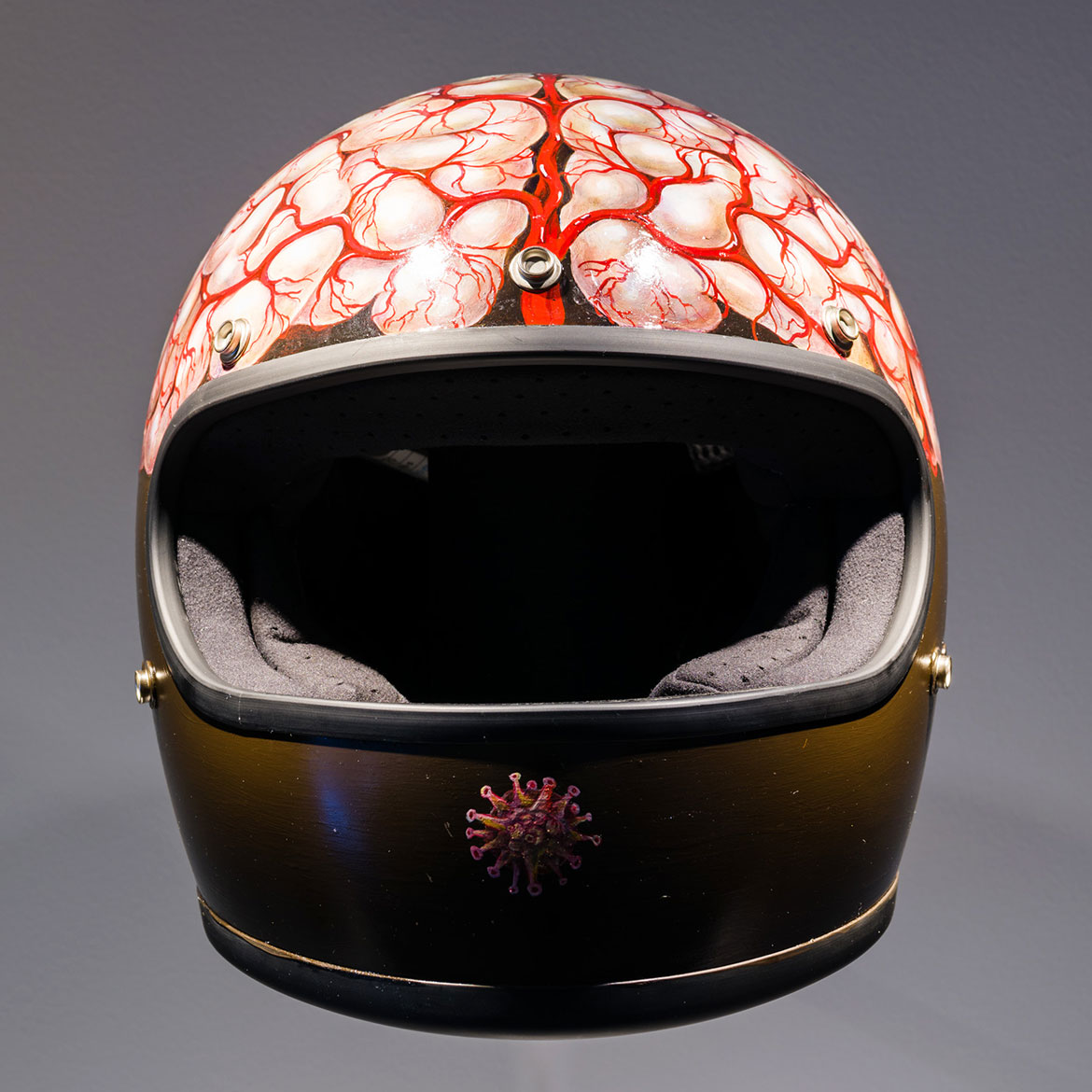
Eric Bridgeman has made his helmet with his cousin Alison Wel, continuing his collaboration with family and friends from his maternal tribe, the Yuri Alaiku, from Papua New Guinea’s Simbu Province. Drawing on their shared heritage, the artists have embellished their artwork with a bilum headpiece, woven by Wel, and clan designs that evoke the ‘growth of hair patterns on the human skull’.
Several artists have engaged with ethical issues. eX de Medici has painted a brain on her helmet, alluding to its function in theatres of war. Having served as an official war artist, she is well-versed in the role that the headgear serves. The helmet is sometimes referred to as a ‘brain bucket’ because it shields the brain and, in catastrophic circumstances, contains its remains.
Together, these varied and inventive responses provide a striking and thought-provoking counterpoint to the design focus of ‘The Motorcycle: Design, Art, Desire’.
Samantha Littley is Curator, Australian Art, QAGOMA

Read more about Motorcycles / Know Brisbane through the Collection / Dive into Australian Art / Subscribe to QAGOMA YouTube to go behind-the-scenes
Featured image: Monika Behrens 13 2020
Show off your ride with #MotorcycleGOMA #QAGOMA 4-2020
